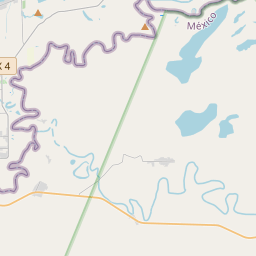Civil War Skirmish







April 12, 1861: The Civil War begins with the Confederate attack on Fort Sumter, located in South Carolina's Charleston Harbor.
April 15, 1861: President Abraham Lincoln issues a call for 75,000 volunteers to serve in the Union Army to suppress the rebellion.
May 24, 1861: The first major land battle, known as the First Battle of Bull Run (or First Battle of Manassas), takes place in Virginia. It ends in Confederate victory.
September 17, 1862: The Battle of Antietam in Maryland becomes the bloodiest single-day battle in American history, with heavy casualties on both sides. The Union forces, commanded by General George McClellan, manage to halt Confederate General Robert E. Lee's advance into Union territory.
January 1, 1863: President Lincoln issues the Emancipation Proclamation, declaring that all slaves in Confederate-held territories are to be set free. However, the proclamation does not immediately free all slaves in the United States.
July 1-3, 1863: The Battle of Gettysburg in Pennsylvania takes place, resulting in a significant Union victory and inflicting heavy casualties on Confederate forces. It marks a turning point in the war.
November 19, 1863: President Lincoln delivers the Gettysburg Address, emphasizing the principles of liberty, equality, and the preservation of the Union.
April 9, 1865: General Robert E. Lee surrenders to Union General Ulysses S. Grant at Appomattox Court House in Virginia, effectively ending the Civil War.
April 14, 1865: President Lincoln is assassinated by John Wilkes Booth while attending a play at Ford's Theatre in Washington, D.C.
May 10, 1865: Confederate President Jefferson Davis is captured, signaling the collapse of the Confederate government.
December 6, 1865: The Thirteenth Amendment to the United States Constitution is ratified, officially abolishing slavery throughout the country.
While this timeline provides an overview of key events, it is important to note that the Civil War spanned over four years, from 1861 to 1865, and encompassed numerous battles, campaigns, and political developments that shaped the course of American history.
Since 1949 the State Historical Marker program has identified and interpreted historic sites across Mississippi. More than one thousand markers can be found near buildings, battlefields, cemeteries, churches, temples, forts, homes, schools, and abandoned towns.
For tourists the markers may be their only glimpses into the state’s rich and varied history. For Mississippi communities the markers can be points of pride that memorialize locally important people and events.
State Historical Markers are privately sponsored and funded. Anyone may sponsor a marker. To qualify a site must have unique historical significance to the local community, the state, or the nation.
The Mississippi Delta region, which is located in the northwest part of the state, is known for its rich soil and has been an important agricultural area for centuries.
During the antebellum era, Jefferson County became a hub for cotton production and slavery. The fertile soil in the county's delta region made it an ideal location for large plantations, and the African-American slave population grew rapidly. As a result, the county's economy thrived, but the lives of enslaved people were marked by hardship and oppression.
The Civil War had a significant impact on Jefferson County, as it witnessed battles and military occupation. Union troops occupied the region, leading to the emancipation of slaves and the end of the plantation system. The county went through a period of reconstruction and attempted to rebuild its economy in the wake of the war's devastation.
Throughout the 20th century, Jefferson County continued to evolve. The Great Migration brought numerous African Americans to the county's towns and cities, including Fayette, Rodney, and Union Church. The Civil Rights Movement of the 1950s and 1960s also left its mark on the area, with activists fighting for equal rights and desegregation.
Today, Jefferson County stands as a testament to resilience, with a diverse population and a blend of historical and natural beauty. The county honors its past with historical landmarks, such as the Rodney Baptist Church and the Martin Luther King Jr. monument. With a growing emphasis on tourism and community development, Jefferson County works towards a vibrant future while acknowledging and learning from its historic roots.
Jefferson County Timeline
This timeline provides a concise overview of the key events in the history of Jefferson County, Mississippi.
- 1802 - Jefferson County established as a county in the Mississippi Territory.
- 1810 - The first courthouse is built in Rodney, the county seat.
- 1821 - More than 2,000 enslaved people live in Jefferson County.
- 1841 - The Mississippi River changes course, bypassing Rodney and leading to its decline.
- 1861 - Jefferson County secedes from the Union to join the Confederacy during the American Civil War.
- 1870 - The county seat is moved to Fayette.
- 1876 - The first railroad is constructed in Jefferson County, connecting Fayette to Natchez.
- 1936 - The Great Mississippi Flood causes significant damage to Jefferson County.
- 1950s - The population of Jefferson County reaches its peak at over 13,000 residents.
- 1966 - The NAACP leads a protest against racial discrimination and voter suppression in Fayette.
- 2008 - Jefferson County experiences a decline in population, with less than 8,500 residents.
- 2019 - The historical significance of Rodney and other areas in Jefferson County attracts tourists and preservation efforts.